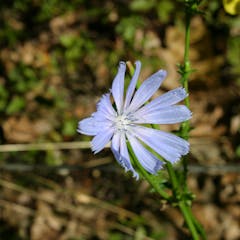
Articles on Conservation biology
Displaying 1 - 20 of 27 articles

The caption may say that only scientists and trained professionals should handle wild animals, but viewers remember the image, not the words.

Dozens of species have been coaxed back from oblivion, with fenced havens, conserved habitat, islands and feral predator control vital.

Melanesia’s tropical islands are home to at least 700 species of frogs – many with tiny ranges. We must safeguard these biological treasures.

Journals, museum collections and other historical sources can provide valuable data for modern ecological studies. But just because a source is old doesn’t make it useful.

Monitoring bird population trends in Nigeria is a valuable activity – but it requires trained people and commitment over the long term.

As a major conference on the global biodiversity crisis opens in Montreal, a conservation biologist explains how ideas about protecting nature have evolved over the past 40 years.

Compassionate conservationists believe all animals have a right to be here, even introduced species like wild horses. Their vocal critics are avoiding vital ethical questions around conservation.

The rapid rate of species declines means we should trial potential solutions before it’s too late.

E.O. Wilson was one of the world’s leading experts on ants, but his other passion was convincing humans to see themselves as part of the natural world.

Dingoes have evolved under Australian conditions. That’s just one step in the path the iconic dog has taken to become native.

The male anatomy of tuatara, the last representatives of an ancient lineage, is unique among reptiles. They lack a penis, which has made sperm collection a major challenge – until now.

Given the scale of the problem, five years was never enough time to turn things around. Clearly, we must reflect honestly on our successes and failures so far.

In the design of marine protected areas, new research suggests that it might be better to start small in order to gain local trust and support that leads to larger long-term benefits.

Some snakes have tough, blunt fangs for cracking crabs. Others have sharp needles for getting a grip on mice.

Pikas – small cousins of rabbits – live mainly in the mountainous US west. They’ve been called a climate change poster species, but they’re more adaptable than many people think.

Southern right wales have been hunted to near extinction. Now their genome has been sequenced to help biologists track their recovery and understand the impacts of climate change, past and future.

Framing cats as responsible for declines in biodiversity is based on faulty scientific logic and fails to account for the real culprit – human activity.

Our research investigated 900 ‘alien’ species across almost 200,000 protected areas worldwide.

Don’t be afraid of spiders – be afraid for spiders

How do you pack butterflies for shipping, or frogs for an overland hike to a new habitat? Three scientists explain how they keep threatened species safe on the road and in the air.
